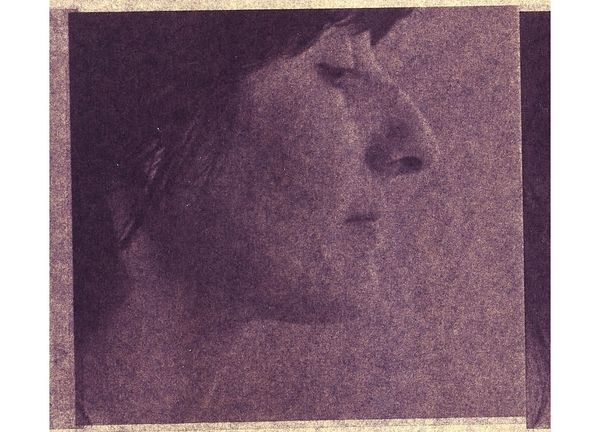Francesca Woodman, Anita Thacher in Profiles of Possible Modern Caryatids. Photographs New York.
—By Chris Mahoney, Senior International Specialist, Photographs
Second Avenue, New York City
In January of 1979, the 21-year-old phenom Francesca Woodman moved to New York City and rented a loft in a drafty building on lower Second Avenue. Even though she had only just graduated from the Rhode Island School of Design, Woodman had already created a remarkably accomplished body of work that was beginning to get noticed. But, in a sense, she was starting from square one: this was the first time she’d be working outside of an academic environment, and she was a neophyte within New York’s byzantine art scene. During this pivotal time in Woodman’s career, she counted upon a network of friends and fellow artists to help her navigate the complex reality of being a young artist in the big city. One of these supporters was right across the hall.
It was Woodman’s good fortune in 1979 to rent a loft on the same floor as artist Anita Thacher (1936–2017). Educated at the New School for Social Research and the New York Studio School, Thacher was older than Woodman, had distinguished herself with cutting-edge film and video work, and was moving on to ever more ambitious projects. Thacher and Woodman quickly became friends, with Thacher serving as a mentor and guide to the younger artist. From 1979 until her untimely death in 1981, Woodman gave Thacher a number of photographic works, many inscribed enthusiastically in her elegant scrawl. The photographs in Thacher’s collection, a tangible manifestation of the artists’ friendship and mutual influence, will be offered in Phillips’ 9 October Photographs auction.

Francesca Woodman, Untitled (self-portrait in curtain), 1980, from the collection of Anita Thacher. Photographs New York.
Today, we acknowledge Francesca Woodman as a genius of photographic art who expanded the expressive capabilities of the medium technically, aesthetically, and conceptually. Her images have graced the walls of museums, most recently London’s National Portrait Gallery, and she was the subject of a major retrospective at Gagosian Gallery in New York earlier this year. It is easy to forget that during her lifetime, she was a little-known artist struggling to get her career off the ground.
Loose Corner

Anita Thacher, “Homage to Magritte,” 1974, 16mm film, color, sound, 9 minutes 30 seconds. Courtesy of the Estate of Anita Thacher and Microscope Gallery, New York.

Anita Thacher, “Anteroom,” 1982, 160 35mm color slide projection, brass doorknob and plate, 12 minutes. Sound by David Byrne. Courtesy of the Estate of Anita Thacher and Microscope Gallery, New York.
Looking at Thacher’s lively, whip-smart work from the period, it’s not hard to see why Woodman was drawn to her. Both artists had an adventurous creative spirit and a desire to push past the conventions of their media. Their friendship became collaborative. When Thacher began conceptualizing her groundbreaking 16mm film installation Loose Corner in 1980, she cast Woodman in it. The first takes show Woodman on set, interacting with a dog, a ball, and various other props. These silent scenes are notable for their interactive quality, with Woodman clearly reacting to Thacher’s off-camera direction but also directing her own performance.
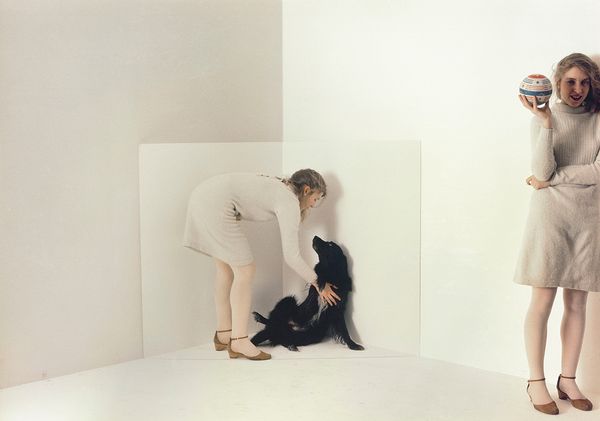
Anita Thacher, Untitled (Loose Corner, woman [Franesca Woodman] with self and dog), 1980. Courtesy of the Estate of Anita Thacher and Microscope Gallery, New York.
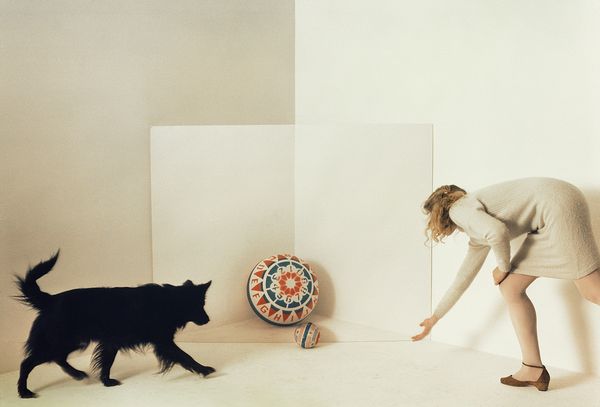
Anita Thacher, “Untitled (Loose Corner, woman [Franesca Woodman] with dog and two balls),” 1980. Courtesy of the Estate of Anita Thacher and Microscope Gallery, New York.
However, these first scenes would never be seen as Woodman died a few months later. When Thacher was ready to return to the work, she had to reshoot Woodman’s scenes with an actress in her role. The finished film features a remarkable array of optical effects that toy with viewers’ expectations and sense of scale. This exuberantly creative spirit is visible in Thacher’s early takes with Woodman.
Two Portraits
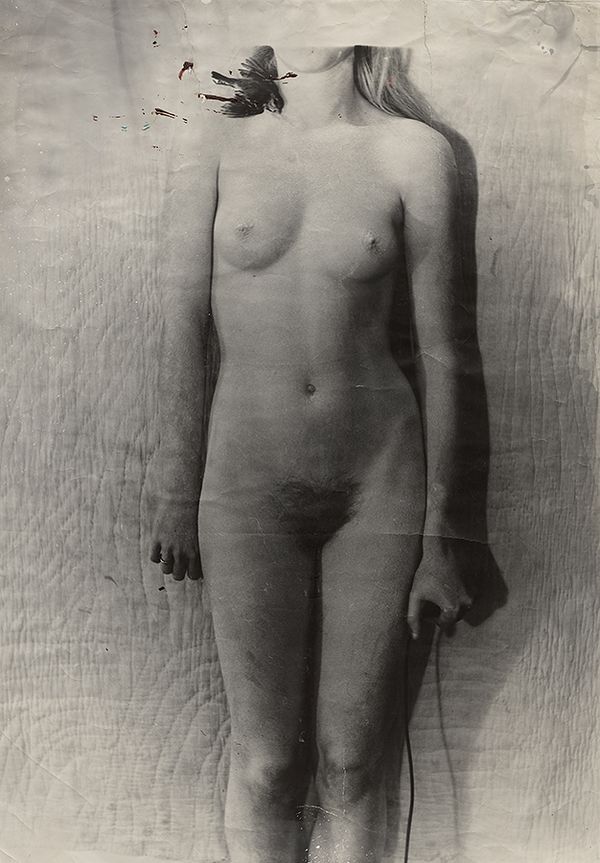
Francesca Woodman, Self Portrait (with bird), 1976–1978, from the collection of Anita Thacher. Photographs New York.
The showstopper in Thacher’s collection is Woodman’s monumental Self Portrait (with bird), 1976-1978. Nothing quite like it has ever been offered at auction. Measuring over 4 by 3 feet, it is one of the largest gelatin silver prints by Woodman extant. While larger blue-toned diazotypes have appeared on the market, this is the largest gelatin silver print to come to auction. Here, Woodman leverages the gelatin silver print’s superior ability to depict form, volume, and detail. With its straightforward presentation of the artist’s body, its unconventional use of photographic materials, and the careful placement of one small but symbolically rich prop — a bird nestled against her neck — this image shows Woodman working at her creative best.

Francesca Woodman, Profiles of Possible Modern Caryatids (study for Blueprint for a Temple), 1980, showing Anita Thacher on the far left, from the collection of Anita Thacher. Photographs New York.
In one of Woodman’s notes to Thacher, dated 11 July 1980, she asks:
“Why don’t i have a really good incisive portrait of my friend Anita?”
Later that year, she would make such a portrait, one showing Thacher in profile. She included the image in Profiles of Possible Modern Caryatids, a serial portrait rendered here as a diazotype. These portraits were a component of Woodman’s Blueprint for a Temple, her largest and most ambitious project, taking the shape of a temple from antiquity. When Temple debuted at the Alternative Museum in 1980, Profiles appeared at the bottom of the composition, serving as a visual pedestal upon which the temple rests.
In Memory of a Friend
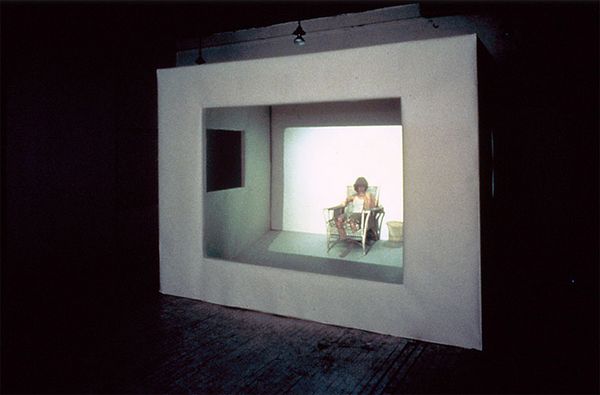
Anita Thacher, Light House, 1981, three 35mm slide projectors, dissolve unit, 280 35mm slides, metal, paper, chair, sound, 12 minutes. Courtesy of the Estate of Anita Thacher and Microscope Gallery, New York.
Woodman’s suicide in 1981 left a hole in the lives of those who knew her. For Thacher, who had lost a friend, collaborator, and one-time neighbor, the absence was acute. Her 1981 multimedia installation Light House is a meditation on presence and absence. The work consists of a wicker chair placed in an otherwise empty room, upon which 35mm slide images of young women are projected. Viewers are free to enter the room and experience both its actual and evanescent components. C. Gerald Fraser, in his review of the installation for The New York Times, noted, “The spectator is able to walk through the space in which a film is being created, unlike a moviegoer who views the artists' creation on a screen. Each slide creates a separate picture image in the room, and the series of pictures seem, to some viewers, to bring the woman to life.” When Light House was shown at PS1 and Alice Tully Hall as part of the New York Film Festival in 1981, Thacher dedicated it, “In memory of a friend, Francesca Woodman.”
In the end, we are left to contemplate Woodman’s blazing intelligence and remarkable body of work, all of it seemingly tailor-made for critical examination. The facts of Woodman’s life left her out of the many discussions on her work that continue to this day. But the facts of Woodman’s life cannot be ignored. Her friendships and her work existed hand-in-hand. Now that we have the privilege of seeing Anita Thacher’s collection of works by Woodman, we are reminded that even though the work is deeply personal, it was not created in a vacuum. The kindness of an older artist to a younger one, and the admiration of the younger for the older, broadens our understanding of Woodman’s unique talent and expands our appreciation of Anita Thacher’s life and work.

Anita Thacher, All Through the House, 1985, three 35mm slide projectors, color wheels, motors, felt, metal, sewn and custom-printed fabrics, foam core, television set, beach bags and umbrella, dimensions variable. Sound by Laurie Anderson. Commissioned by the Fabric Workshop, New York. Courtesy of the Estate of Anita Thacher and Microscope Gallery, New York.
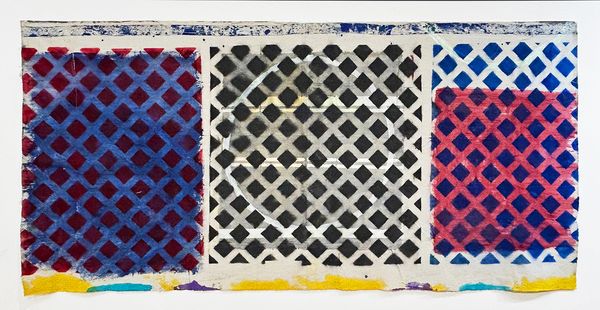
Anita Thacher, The Blues #33, 2016, acrylic on canvas, 63 x 107 1/2 inches. Courtesy of the Estate of Anita Thacher and Microscope Gallery, New York.
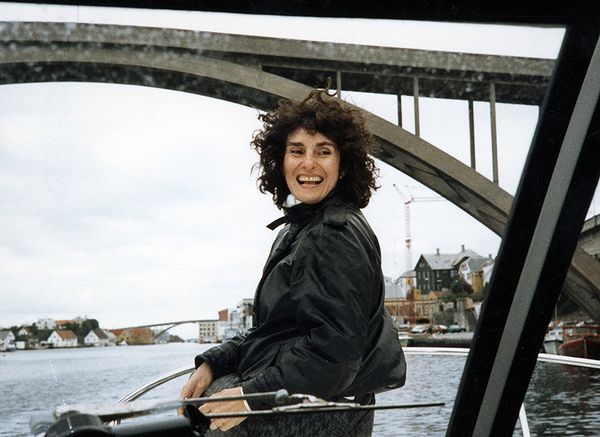
Anita Thacher, around 1980. Courtesy of the Estate of Anita Thacher and Microscope Gallery, New York.
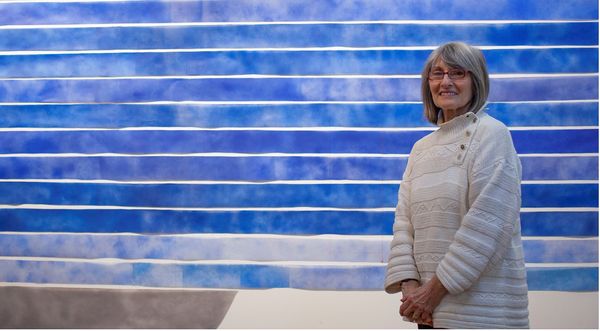
Anita Thacher, with The Blues, © 2013 Geanna Merola.
Discover More from Photographs >
Recommended Reading:
Specialist Picks: Photographs New York >
